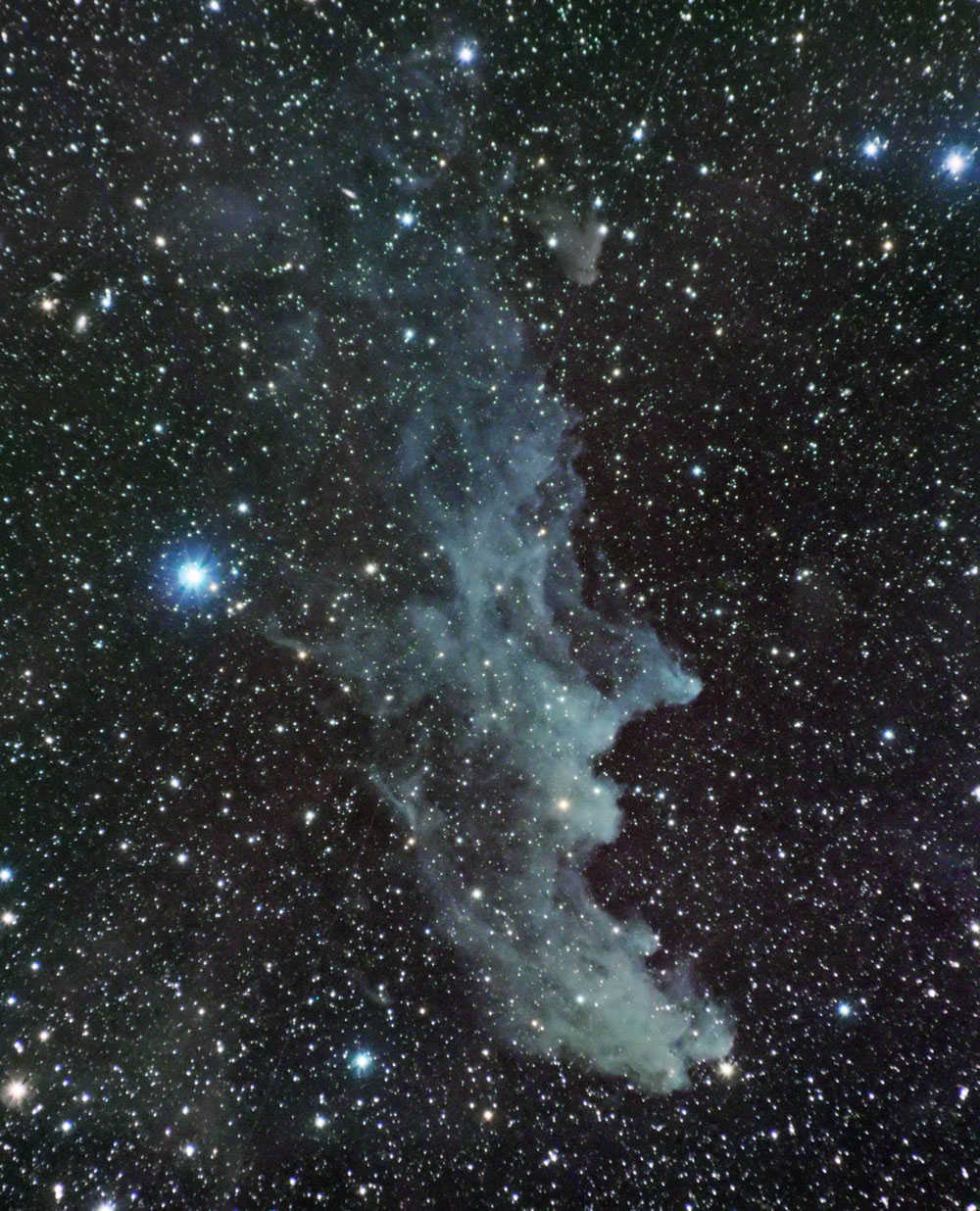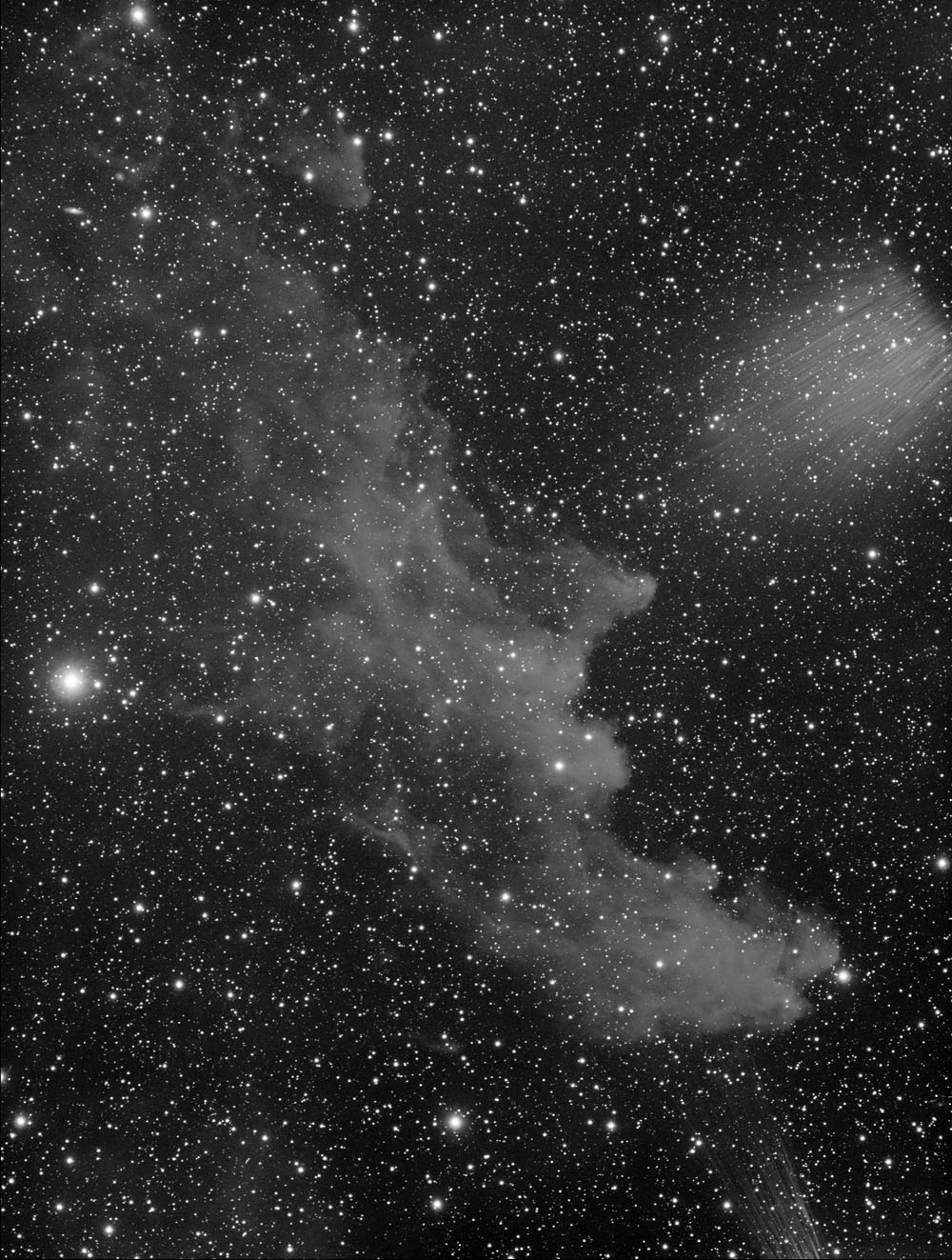Having given up on trying to process out the mis-matches between the upper and lower panels of the Witch Head Nebula (as captured in Australia), I tried 2 different ways to capture it here in southern California. The first of these attempts was using the William Optics Star71 telescope, which produced a reasonably good image, except that this ‘scope has a defect that causes severe aberrations when there is a bright star just outside the field of view (this is the 1st version of the Star71 – I believe they corrected this problem in the current version). Rigel, a very bright star, is above and to the right of the Witch Head in the (monochrome) image below. Another bright star is off to the lower right.
After seeing this I gave up on this plan and did not capture any color data. Instead, I used a 200mm camera lens, the Tamron 70-200 zoom, stopped down to somewhere between f/4 and f/5.6. This produced the color image at the top of this post. The obvious problem here is that the lens doesn’t deal well with stars. The bright stars show diffraction spikes from the lens iris, and stars in the corners are not round. It also took a lot of processing (cleaning up the image) to reduce/eliminate gradients caused by light pollution, which also makes it very difficult to get good color.
But bottom line is that the Witch Head Nebula (IC 2118) is a very difficult target to capture. Here’s a list (not necessarily complete, or in order of significance) of the issues:
- It’s too big for most telescope/camera combinations
- It’s extremely dim, so very dark skies and long exposures are needed
- There are very bright stars right next to this very dim nebulosity
- Even here in southern California (33 degrees N latitude), the Witch Head is not high enough in the sky to avoid light pollution from distant cities (in this case, mostly from San Diego)
I spent 2 nights on this, so the results are disappointing, but while it was capturing, I did manage to get some potentially interesting shots with a wide angle lens on a DSLR camera, which I will post next time.
Despite the warm, sunny days, it gets pretty cold at night out in the desert. The last 2 nights, as I was shooting the Witch Head, the temperature was in the low 40s most of the time. That’s not really cold – I typically consider low 30s (near freezing) to be my working limit. But I’ve noticed since arriving here that it always seems colder than the actual temperature. I guess it’s because of the lower humidity. So I’ll have to stop making fun of southern Californians who put on a Winter coat when the temperature drops to 65!

